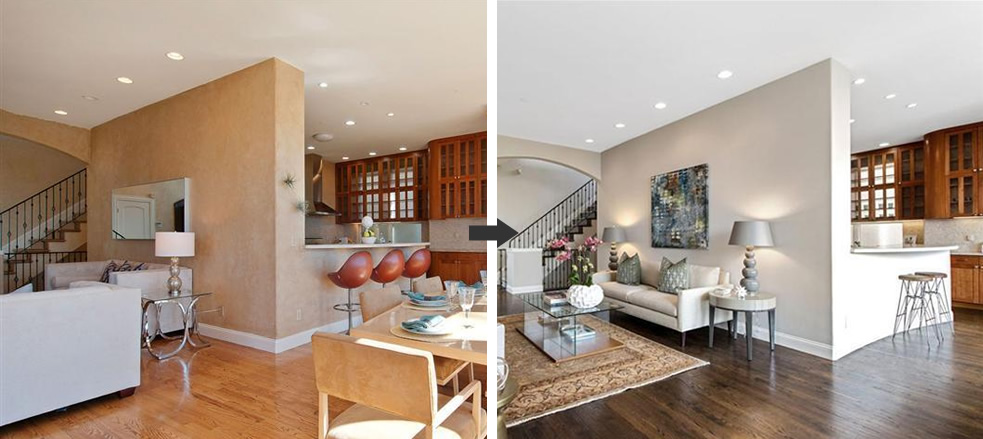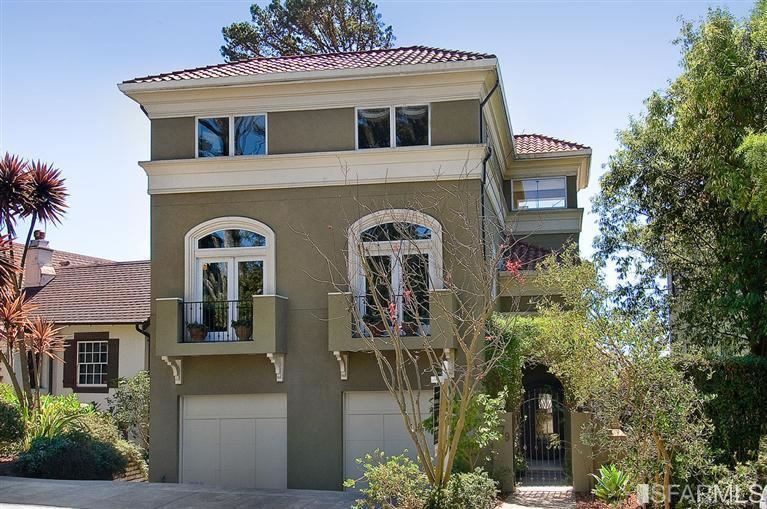Purchased for $2,600,000 nine months ago when on the market for $2.9 million, the 4,665-square-foot Forest Hill home at 279 Castenada Avenue was “updated with current colors and style featuring refinished hardwood floors…custom window treatment[s] and nice accents” and returned to the market two months ago listed for $3,195,000.
On Monday, the sale of 279 Castenada closed escrow with a reported contract price of $3,012,000.
While the re-sale was $183,000 (6%) under asking, it was $412,000 (16%) over the $2.6 million paid for the home in December, not a bad return on those cans of paint and stain.


Pretty risky flip if you ask me.
Apparently the dark wood floors and white-(ish) walls so many here love are worth about 16%.
Will the real buyers replace that kitchen?
They also replaced a bulb in one of the can lights. That’s got to add an extra 1% to the flip.
Two of ’em. 2%
Nahh, look up by the lattice of glass cabinet doors. They just took two bulbs from there, put them in the two dark cans, and deleted the cans from which the bulbs were removed. Sheet rock work. Noice.
And lower energy costs, to boot!!
How much do you think the flippers net? I read somewhere that transaction costs are at least 10% of the sales price, especially considering that the tax is going to be 7% and real estate agents are going to want theirs. Then there is the cost of capital for 9 months and the cost of paint, floors, bulb etc.. Is it possible that 16% increase nets nothing to the flippers?
Probably netted about $150,000 after commissions, transfer taxes, property taxes, and interest. Not bad (for a leveraged investment) but not that great considering the high risk. And it’s taxable at full short term capital gains rates. Still, I’d take it.
^ no. Commissions 150K, transfer tax 23K, property tax 30K, opportunity cost of cash — I’d say they netted about 210K or so.
I wonder how many flippers have real estate licenses to cut down on the commissions?
anon, by your math they paid no interest and had no opportunity cost – $2.6 million for free. Not reasonable or realistic. Net of $150,000 is about right. And that is assuming zero cost for the improvements they made.
I didn’t see a mortgage. what would you assign to the opportunity cost?
also, opportunity cost is a factor to be considered initially when vetting a deal. not a subtractor.
Well, as you stated in your earlier post, opportunity cost is a real cost whether you consider it to be a “subtractor” off the back end or an alternative at the front end. Bottom line is the same – less money for you.
If there was a mortgage (as I had assumed), then one clearly has to include the interest, maybe around $60,000 – so the gain about $140,000 or $150,000. If there was no mortgage, then this return is even worse because they did not get the advantage of leverage. The S&P 500 returned about 10% (depending on the precise start date — maybe a little more, maybe a little less). So that would have netted about $260,000. Take the $200,000-odd they pocketed here and subtract that $60,000 difference (the opportunity cost) and you’re at $140,000. So whether you consider the $60,000 in lower returns from this flip as a “cost” or just “less gain,” the result is the same – less money in pocket.
As I said, I’d take this result. But it is a low return for the very high risk. Would have been better off with a simple S&P 500 index fund and the downside risk would have been far lower. The very high transaction costs with real estate make it a lousy investment as a general rule. Even this very good outcome ($400,000 in just nine months!) illustrates that point.
sorry, didn’t mean to be so dismissive. feel free to delete the “no” … I was doing six things at once
^
That math assumes the cost of the work was free, as was the money.
This was not a flip.
I went to the open house and the seller’s agent told me the story. A wealthy family bought the house and hired an interior designer to oversee some minor upgrades (paint, floors etc). They also looked at schools in the area for their kids. However, when the house was ready to move in, the dad was forced to relocate to the East Coast for professional reasons.. So they put it back on the market.